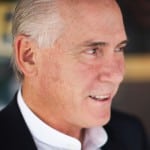
I recently visited the extraordinary new Barnes Foundation Museum in downtown Philadelphia (www.barnesfoundation.org). As many will know, this is a truly stunning collection of largely post-impressionist and early modern paintings collected by Dr. Albert C. Barnes in the first half of the 20th Century. Among its many superlatives, it includes the largest assemblage of Renoirs to be found anywhere in the world. But unlike most traditional museums where artifacts are displayed linearly, segregated by artist, medium and period, Barnes turned his rooms themselves into art, mixing masterpieces, miniatures and metal works to create what he called “ensembles.”
From Cezannes and van Goghs to hand-crafted steel door hinges, delicate silverware and exotic pottery, each room is themed by color, shared design elements, or evocative storytelling that blends and contrasts the featured contents into a totally immersive visual and tactile experience. It’s a remarkable and uplifting achievement that literally changes one’s perceptions of the art itself.
What does any of this have to do with public relations and marketing communications? From my perspective, everything. We are in the business of influencing and, frequently, outright changing perceptions.
Sometimes we are given great stories to tell; more commonly we’re asked to elevate the mundane or, perhaps too often, gild the less positive aspects of a situation.
In virtually every case, however, we as professional marketers are tasked to find the most compelling way to communicate the best, most salient features of a particular story or brand, make it exciting and relevant in context as well as substance and then get it shared widely in one form or another.
THE ART OF PR
Executed properly, the results can be transformative for clients, companies and, sometimes, entire industries.
For most of us, though, our first instinct when tackling these challenges is to literally “write the story” in our linear minds, structure our thinking by paragraph, and rely on our knowledge and experience with the tried and true to address the problem at hand.
What is the headline we want to see in tomorrow’s media? Who are our most important audiences and where will we reach most of them at the right time to radiate our story through the right channels?
All classic communications doctrine are impossible to fault. But how often do we imagine the challenges we face in terms of their opportunity to create comprehensive visual and verbal experiences?
How often do we seek to entirely change the perspective? In the era of instant—and near constant—news updates in 140 characters, communicating a complete (and captivating) story in a dozen words, with maybe a photo attached, is now assumed protocol. And almost completely inadequate at breaking though the clutter.
GENERATE THE BIG IDEA
In the spirit of Dr. Barnes’ visual ensembles, perhaps it’s time we looked more expansively at the “whole room” in our public communications efforts.
By that I mean taking the 360 degree view and literally engaging someone from beyond our usual coterie of PR wonks into our process— someone with a completely different take on our world.
What if a branding or graphic designer was invited into an up-front brainstorming session about how to address a major public relations opportunity? Or if we asked an artist to capture the story as they see it? Or musician?
The point is simply that design—and broad creative interpretation—can and should play a more central role in communicating big ideas clearly and evocatively in public relations.
This is “ensemble” thinking and it requires real collaboration, a term many of us use liberally in concept but too rarely in practice.
It inevitably means venturing beyond our comfort zone and inviting a fresh eye to the table—not always a comfortable proposition and never without risk.
But few great success stories begin without a leap of faith and a willingness to accept consequences, both good and bad.
Albert Barnes’ legacy is to invite us to step back and look at the whole room, brilliant in detail but magnificent in aggregate.
Ours can be to embrace our industry’s ever expanding diversity of tools and talent and apply them towards powerful new communications ideas that ultimately elevate and inspire.
CONTACT:
Hayes Roth is a senior executive at Landor New York. He can be reached at [email protected].
This article originally appeared in the April 21, 2014 issue of PR News. Read more subscriber-only content by becoming a PR News subscriber today.
